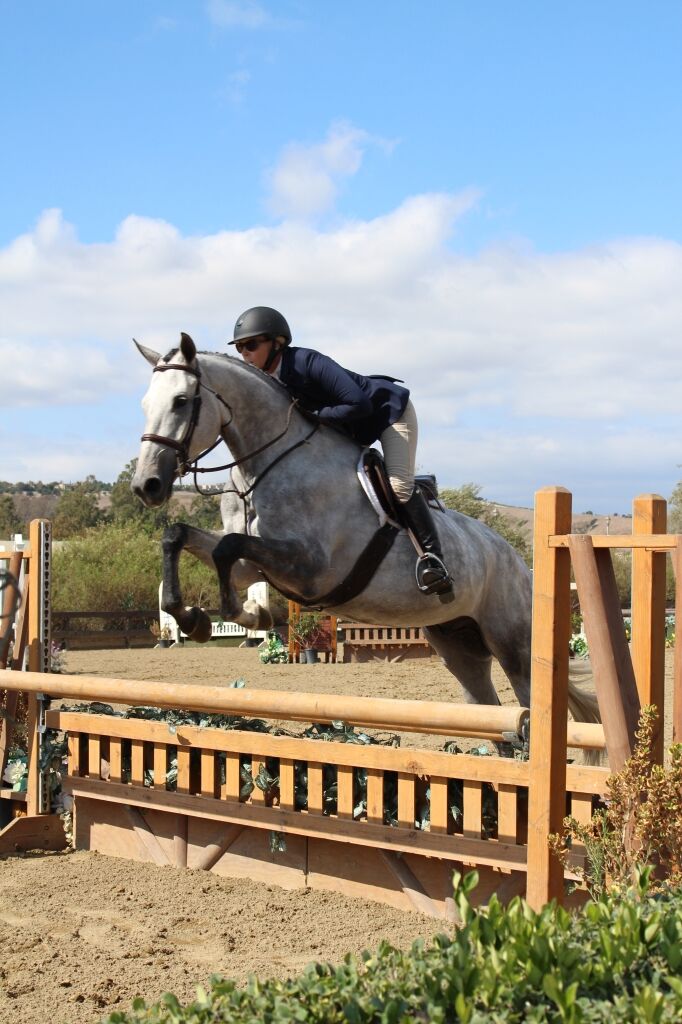
Photo by Alissa King
Getting to really know a horse is something all horsemen know takes time, hours spent together both inside and out of the saddle; but, unfortunately, IHSA does not work like that. You are given a draw that has been randomly selected for you, and expected to go in the ring and lay down an amazing course or flat round.
Though it doesn’t always work out the way we want it to, I believe that by following these three steps you can get to know a horse well enough to succeed in the IHSA ring.
Step One: Keep a journal for horse notes and keep it up-to-date.
This step is actually a trick I picked up from my western coach, Harry Hurd, but that undeniably works for both disciplines. When I first started my IHSA career, Harry told our 6:30am practice it would be a good idea to have a little book to keep track of our “horse notes.”
Originally just following his suggestion as an eager freshman, I bought a small five-inch spiral notebook and dedicated a full page to every horse I had ridden so far, leaving room for later entries—as he had suggested—explaining that a horse has good and bad days and “you need to know how to ride both.” After four years, my notebook is now mostly full, filled with different horse’s quirks and magical go-buttons scribbled in colored pens.
Though I always seem to manage to forget my little book come horse show morning and end up jotting notes on scrap paper, I haven’t forgotten what Harry told me: a horse has good and bad days, and he rides different for everyone.

Taking notes during schooling hour in frigid conditions. PC: Ellie Woznica
Step 2: Take Advantage of the Schooling Hour
Before a show starts, competitors familiar with the horses being used in the competition will warm the horses up, and all athletes can observe this early schooling period to learn more about the horses.
I always make sure to take advantage of the schooling and take more notes. I take notes on horses I drew last weekend the same as I would for ones I haven’t ever seen before. Pay attention to how each horse likes to carry himself. Is the bay high headed? Does the chestnut like a soft hand? Write down whether each horse you see has a lead change or not. Count the striding that all the horses get in the lines. Try to think past rider error. Does that grey horse really like to take longer spots, or is the rider asking him for them?
Use this time to familiarize yourself with the horses in your draw. Be sure to cross reference your notes with the horse provider’s notes (which are provided to all competitors.) Make note of anything important that you miss. Maybe you didn’t notice that a horse was sticky picking up his left lead, or that he doesn’t like to be crowded by other horses. Hold on to your notes, and reread what you have written once your draw has been revealed.
Step Three: Mentally catalog your notes and trust your gut.
In IHSA, there is no warm up. You don’t get to flat around a bit and you don’t get any practice fences. For this reason, it’s super important for you to be flexible and know when you need to forget about your notes.
Don’t get stuck on something you saw during the schooling or something that you wrote down when you saw the horse go the weekend before. If the horse has a great lead change—you saw him do it multiple times—but then you can’t get him balanced in the corner, just simple change and move on.
Don’t worry if things don’t go according to your plan. Say you drew the gray horse you watched school earlier in the day. He looked super lazy and you wrote “needs LOTS of leg” below his name, but now that you are on him and have picked up the canter in your opening circle, he is really forward moving, taking you towards the jump (maybe a little quicker than you would have liked). This is where you need to forget your notes and trust yourself.
Listen to your gut as much as you listen to your coaches. If you pick up the canter and don’t feel like you have enough pace for your first jump, establish more. If it feels like you should add in the line because your horse has a smaller stride than you expected, do it. Don’t be afraid if your plan for the inside rollback turn doesn’t work out, just change the plan. Be safe and trust yourself.
Enjoy the ride and you’ll never lose.
